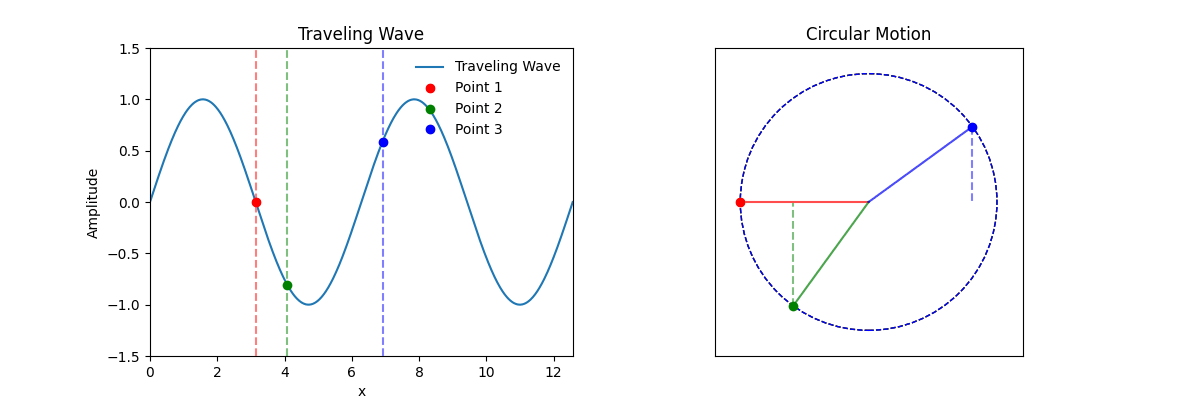
This animation illustrates a fundamental concept in wave physics: the phase of a wave at any given point is a function of both position and time.
The left plot shows a traveling wave, typically described by the function:
y(x, t) = A · sin(kx - ωt)
Here, the phase (kx - ωt) depends on both position x and time t. Three points on the wave (red, green, blue) show how displacement changes with time at different fixed positions.
The right plot represents each point's motion as a projection of a rotating vector (phasor) around a circle. The angular position around the circle reflects the phase at each location:
The animation shows that in a traveling wave, the phase at each point is not only a function of time, but also of position. This is why the wave form travels through space, rather than oscillating in place.